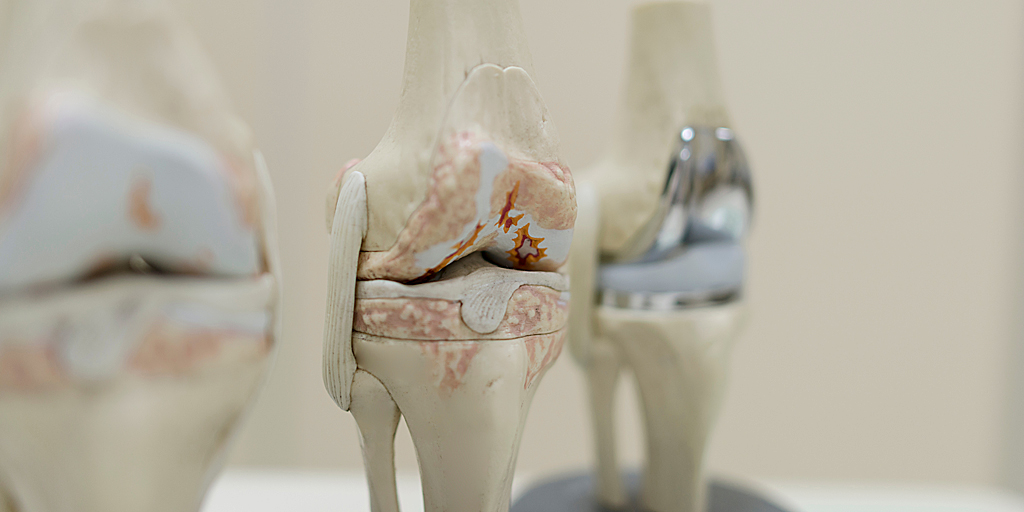01 With the upcoming orthopedic conference season upon us, we thought it would be interesting to take a look back at a fascinating article written by Elise Wolf, Senior Analyst, Computer Assisted Surgery, from NASS 2108, discussing the future of robotics and other enabling technologies that created a buzz on the exhibit floor.
With the upcoming orthopedic conference season upon us, we thought it would be interesting to take a look back at a fascinating article written by Elise Wolf, Senior Analyst, Computer Assisted Surgery, from NASS 2108, discussing the future of robotics and other enabling technologies that created a buzz on the exhibit floor.
Robotics, navigation and other enabling technologies were hot topics at the North American Spine Society’s (NASS) 33rd annual meeting, held September 25-28, 2018 in Los Angeles, CA. Manufacturers are developing a variety of computer-assisted surgery (CAS) technologies for spine surgery, including surgical planning systems, navigation systems, robotics, augmented reality (AR) technology and artificial intelligence (AI). While growth in the fusion market has slowed over the past few years due to pricing pressure, reduced procedure volumes and reimbursement non-coverage, robotic and other CAS technologies have offered means for growth...
With benefits that include more precise implant placement, reduced radiation exposure, decreased invasiveness of procedures and implant pull-through for manufacturers, CAS technologies are gaining traction. By 2022, nearly 235K spinal fusion procedures will be performed using navigation and/or robotics according to SmartTRAK’s CAS Spine Market Overview. SmartTRAK reports the latest news from NASS 2018, and highlights some of the interesting CAS technologies on display at the meeting...
Robotics
Robotics was a large topic of discussion during the meeting and on the exhibit floor. Spine market leader Medtronic (MDT) believes strongly in the future of robotics for spine surgery. At the Company’s recent investor conference, MDT executives estimated that up to 35% of instrumented spine procedures will be performed using robotics in 10 years. MDT believes its recent acquisition of Mazor (announced in September) will accelerate its product development and commercialization initiatives in robotics, and positions the Company to capture additional market share in both robotics revenues and core spine through implant pull-through. MDT management noted they are seeing high single-digit implant growth in accounts with capital equipment purchases of Mazor X, and double-digit growth in accounts that pay for the robotic system through multi-year, minimum volume commitments of incremental implant purchases. At NASS, MDT introduced the Mazor X Stealth, which integrates the Mazor robot with the Company’s StealthStation S8 navigation system. MDT submitted the 510(k) for Mazor X Stealth in July 2018 and the product launch is slated for year-end.
Despite upcoming commercialization of Mazor X Stealth and other spine robots on the horizon, Globus believes that validation of the spine robotics market by MDT’s acquisition of Mazor is a good sign for the future of its Excelsius GPS spine robot. Globus also touts strong utilization per system, its recent acquisition of Nemaris’ SURGIMAP planning software (announced last month), and expanding installations into competitive accounts as advantages going forward. It is early to see significant implant pull-through from the Excelsius GPS system given the relatively low number of systems installed to date (SmartTrak estimates an installed base of ~60 through year-end). However, SmartTRAK expects Globus’ US core spine business will see low single-digit growth through implant pull-through by 2021.
Zimmer Biomet anticipates a Q418 limited launch of its ROSA Spine robotic system, with full launch planned for 2019. The platform is a bedside system that integrates Zimmer Biomet’s in-house navigation and intraoperative planning system. The system does, however, require K-wires for pedicle screw insertion, a feature viewed as a disadvantage compared to the Mazor X Stealth and Excelsius GPS systems. Once available, the ROSA Spine robotic system will be sold through Zimmer Biomet’s capital equipment sales force and SmartTRAK anticipates that it will become a significant competitor in spine robotics after 2020.
DePuy Synthes has a few robotic systems in the works. In September, DePuy Synthes entered into an agreement with Brainlab to leverage Brainlab’s Cirq robotic arm integrated with the Kick and Curve navigation systems. The first generation Cirq passive robotic arm is positioned manually by the surgeon and then locked into place to hold navigation-ready instruments while the second generation Cirq active robotic arm uses manual macro positioning for more rapid alignment, with automated fine positioning to achieve accurate orientation. The Company anticipates the first and second generation devices will receive FDA clearance by YE18 and H219, respectively. The Cirq robotic systems are expected to cost less than half that of other systems and will provide a less expensive alternative robotic system to hospitals that cannot afford other spine robots. Through its February acquisition of French orthopedic robotics company Orthotaxy, DePuy Synthes is expected to have another robotic system available in 2020 for total and partial knee replacement, with spine applications expected to follow.
Stryker, which announced the acquisition of K2M in August, is developing spine applications for its MAKO robotics system. Mako Spine is expected to be available in the 2020 timeframe. The Company also highlighted its strategic partnerships with Synaptive Medical and Ziehm Imaging. The agreement includes use of Synaptive’s BrightMatter Plan software that provides whole-brain tractography for surgical planning and navigation, and Ziehm’s Vision RFD 3D C-arm used in orthopedic, trauma and spinal procedures.
Modular Surgical Intelligence
At NASS, NuVasive introduced its modular Pulse surgical intelligence system that integrates into a single platform 2D/3D navigation, neuromonitoring, surgical planning, radiation reduction patient-specific rod-bending, and smart imaging (through a partnership with Siemens Healthineers’ 3D Cios C-arm). Although NuVasive has not yet introduced a robotics system for spine, one is likely under development that will be compatible with its Pulse System. NuVasive believes its Pulse platform offers several competitive advantages including the ability to incorporate two cameras to provide a wider field of view, smaller more compact arrays, and seamless integration of multiple technologies into a single platform designed specifically for spine procedures for improved workflow. The Company is taking orders for systems with launch scheduled for Q219.
Other Computer-Assisted Surgery Technologies
7D Surgical highlighted its Machine-vision Image Guided Surgery (MvIGS) system, which enables navigation within direct line-of-sight. The system, which uses an overhead light source, is designed for more rapid registration and recalibration (20 seconds versus up to 30 minutes in traditional navigation). In addition, while preoperative CT is still required, intraoperative CT is eliminated and intraoperative x-ray is greatly reduced thereby reducing radiation exposure to the patient, surgeon and OR staff. To date, the system has been installed in 10 centers in the US.
MiRus demonstrated its Galileo Spine Alignment Monitoring System, which was awarded as a top 10 Best New Technology for spine care by Orthopedics This Week. The Galileo is a proprietary active navigation system that incorporates MEMS technology into wireless sensors and uses non-optical digital imaging to provide continuous intraoperative tracking of instruments, as well as monitoring of segmental and global spine alignment during surgery. Compared to traditional navigation systems that use a large sensor array of four spheres for patient registration, the MiRus system incorporates a low cost, multi-sensory system using a single small pattern of fiducial markers. The Company has submitted a 510(k) for its sensor technology to the FDA.
Surgivisio’s navigated imaging system, which enables 2D and 3D intraoperative imaging in a single platform, was also on display at NASS. The Surgivisio system uses acquired radiographs to reconstruct 3D images for real-time surgical navigation. According to the Company, set up takes only five minutes with the use of a percutaneous patient reference anchoring system and pre-calibrated instruments. A robotic C-arm enables translational movement controlled using a touchscreen on Surgivisio’s tablet interface. This system has not yet received 510(k) clearance.
Augmented reality (AR) navigation systems have the potential to transform minimally invasive spine surgery by allowing the surgeon to “see” the individual’s anatomy with direct line-of-sight to view anatomical structures underneath the patient’s skin. Augmedics’ xvision system, which was also recognized with a Best New Technology Award, uses an AR headset to superimpose patient CT data into the surgeon’s line-of-site to reveal patient anatomy and instrument positioning in real-time. Also in this space is Novarad’s OpenSight system, which integrates Microsoft’s HoloLens goggles with CT and MRI imaging studies to project a 3D hologram of the patient’s anatomy and virtual instruments into the surgeon’s field-of-view. Both companies have submitted 510(k)’s to the FDA.
Discussion of computer-assisted surgery would not be complete without including artificial intelligence. Medicrea’s UNiD Adaptive Spine Intelligence system combines preoperative planning with 3D simulation, patient-specific spinal realignment rods, data mining and artificial intelligence. The Company’s proprietary iterative process uses machine learning and predictive modeling to correlate outcomes to assist in surgical planning.
Technology Integration is the Future of CAS
The CAS market for spine surgery is still in its infancy. SmartTRAK expects digital technologies to rapidly advance over the next five to 10 years, potentially transforming how spine surgery is performed. Integration of enabling technologies such as surgical planning, navigation, robotics, AR and AI into multifunctional systems will continue to push technological capabilities, address limitations to adoption (learning curve, size constraints, OR time, etc.), and most importantly assist in improving patient outcomes.





.png)

